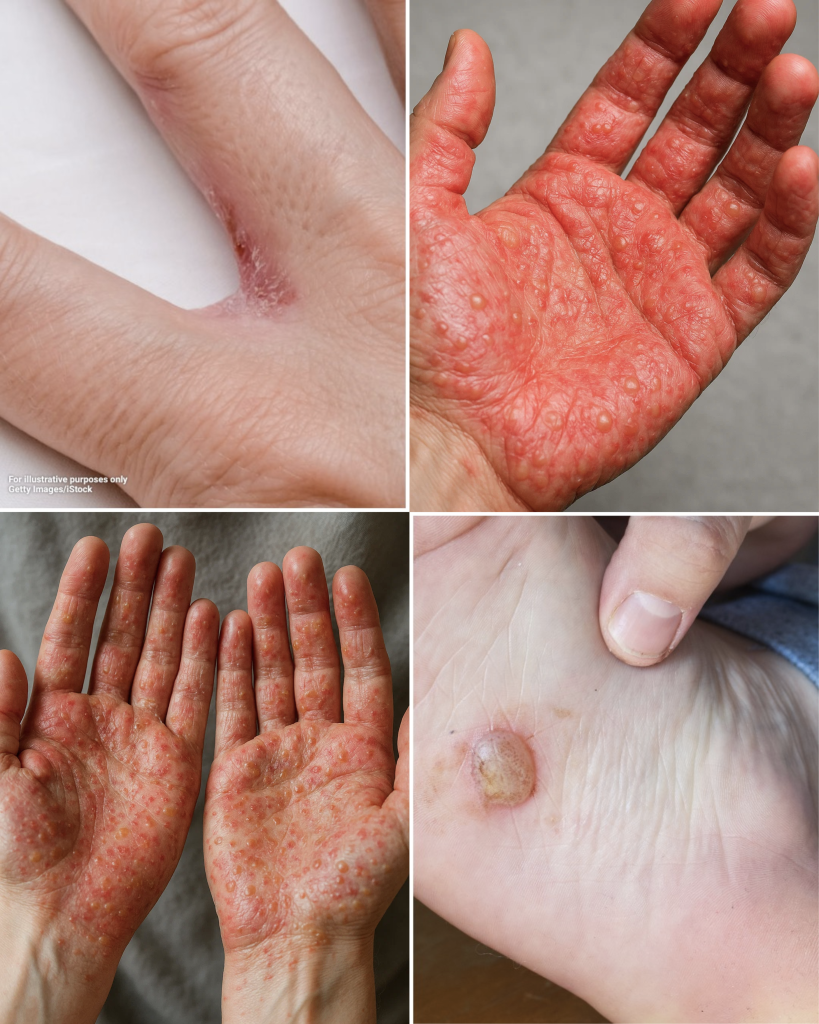With summer approaching, many people look forward to spending more time outdoors enjoying the sunshine. However, if you suffer from eczema, particularly dyshidrotic eczema, flare-ups can interfere with your ability to fully enjoy the season. This common type of eczema tends to worsen in the spring and causes small, itchy blisters that may appear on the hands and feet.
While eczema currently has no cure, it is manageable with proper care and treatment. The first step toward relief is understanding the condition and recognizing its symptoms.

What Is Eczema?
Eczema, also known as dermatitis, refers to a group of skin conditions that cause inflammation and irritation. It affects millions of people worldwide, with an estimated 35 million Americans experiencing eczema at some point in their lives. About 70% of eczema cases begin before the age of five.
During an eczema flare-up, the affected skin becomes red, itchy, swollen, and may develop fluid-filled bumps that can ooze or crust over. Although eczema is often linked to allergic reactions, it is not contagious. The condition can be hereditary, and while there is no permanent cure, flare-ups can be effectively controlled through treatment.

What Is Dyshidrotic Eczema?
Dyshidrotic eczema is a common form of eczema characterized by the development of small, intensely itchy blisters on the edges of the fingers, toes, palms, and soles of the feet. This type of eczema is often associated with seasonal allergies, making flare-ups more frequent in the spring.
The blisters caused by dyshidrotic eczema can be painful and may take several weeks to heal completely. It is also known by several other names, including:
- Pedopompholyx (affects the feet)
- Cheiropompholyx (affects the hands)
- Vesicular palmoplantar eczema
- Dyshidrosis
- Foot-and-hand eczema
- Dyshidrotic dermatitis
- Vesicular eczema
- Pompholyx
Symptoms of Dyshidrotic Eczema
Recognizing the symptoms of dyshidrotic eczema is essential for proper treatment. Common signs include:
- Deep-seated blisters on the hands and feet, especially along the edges of fingers, toes, palms, and soles
- Intense itching
- Redness and inflammation
- Flaking or peeling skin
- Scaly, cracked skin
- Pain or discomfort in affected areas
Because different types of eczema may require varied treatments, identifying dyshidrotic eczema specifically can help guide appropriate care.

Causes and Risk Factors
Dyshidrotic eczema occurs more frequently in women than men and is most common among adults aged 20 to 40. People who suffer from other skin conditions such as contact dermatitis, atopic eczema, or hay fever are at higher risk of developing this form of eczema. A family history of dyshidrotic eczema also increases the likelihood of occurrence.
This condition has a tendency to become infected, which can prolong healing. If signs of infection such as increased redness, swelling, or pus appear, it is important to seek medical advice promptly.
Treatment Options for Dyshidrotic Eczema
While dyshidrotic eczema cannot be cured, it can be managed effectively with a combination of conventional and natural treatments.
Conventional Treatments
In severe cases, doctors may recommend corticosteroid creams, ointments, or prescribed medications including injections or pills. Other common treatments include:
- Ultraviolet (UV) light therapy
- Draining of large blisters
- Antihistamines to reduce itching
- Anti-itch creams
- Immune-suppressing ointments such as Protopic and Elidel
Natural and Home Remedies
For those seeking less invasive options, natural treatments can provide relief and help maintain healthy skin:
Cold Compresses
Applying cold compresses or soaking the affected area for about 15 minutes can reduce inflammation. Repeat this several times a day, followed by moisturizing to enhance effectiveness.
Aloe Vera
Aloe vera gel is known for its soothing and healing properties. Applying fresh aloe gel or natural aloe vera lotion to irritated skin may help reduce discomfort and promote healing.
Oatmeal Baths
Oatmeal has anti-inflammatory benefits and can relieve itching and irritation. Using colloidal oatmeal in baths or as a topical application can improve skin condition and soothe eczema symptoms.
Conclusion
Understanding the type of eczema you have is crucial to managing symptoms and improving your quality of life. Dyshidrotic eczema, while common and sometimes painful, can be controlled with the right treatment strategy.
With proper care, you can enjoy the warmer months without being held back by flare-ups. Educate yourself about your condition, follow treatment recommendations, and take preventive measures to keep your skin healthy and comfortable.